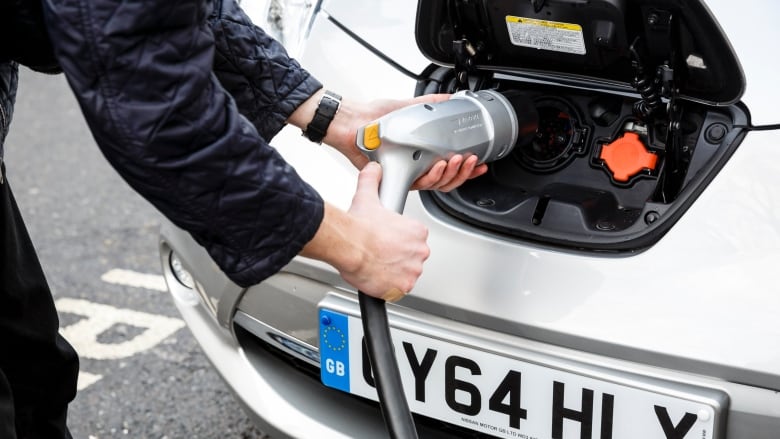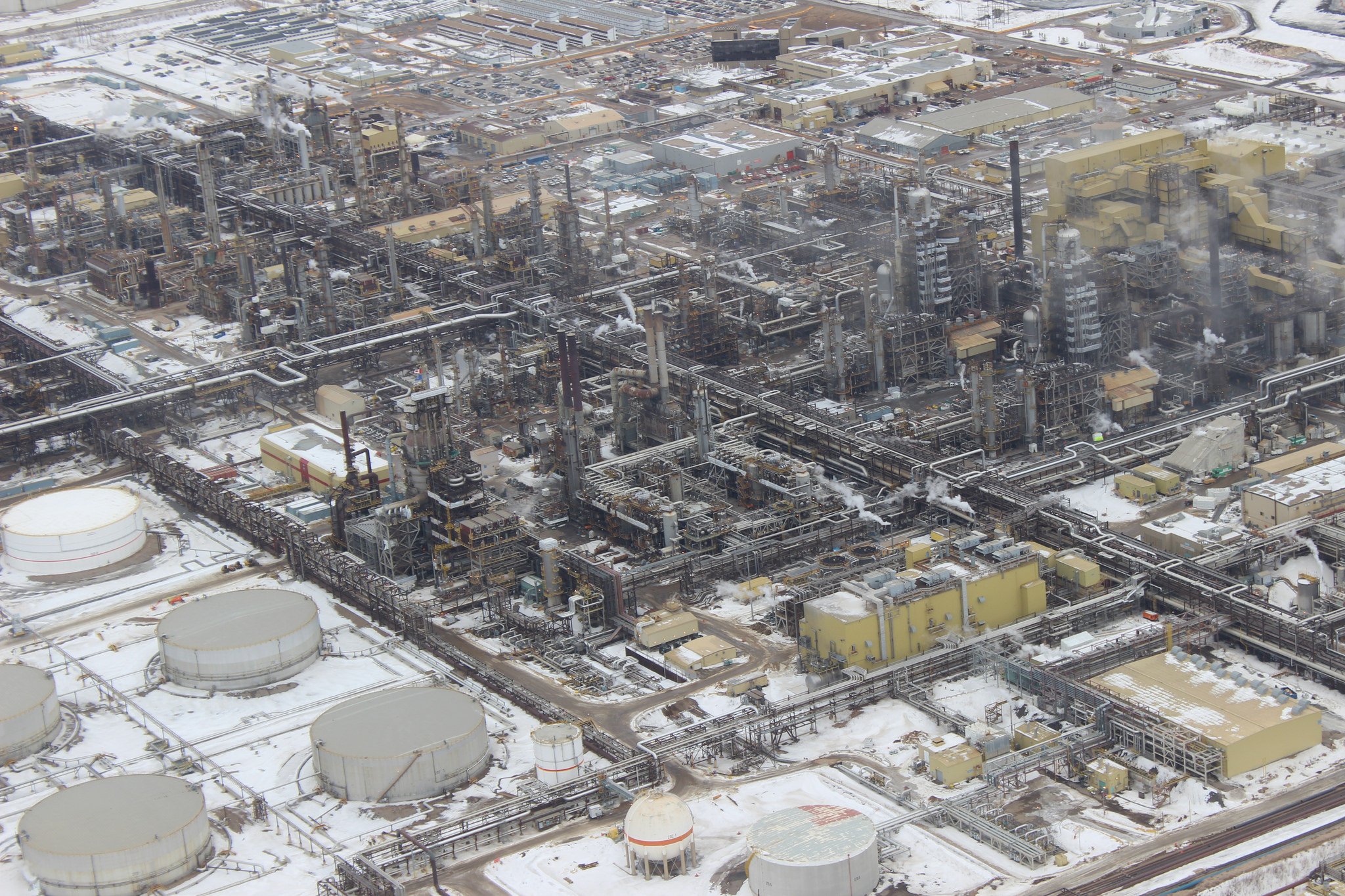Home » Posts tagged 'carbon emissions' (Page 8)
Tag Archives: carbon emissions
The Radical Plan to Save the Planet by Working Less
The Radical Plan to Save the Planet by Working Less
The degrowth movement wants to intentionally shrink the economy to address climate change, and create lives with less stuff, less work, and better well-being. But is it a utopian fantasy?
In 1972, a team at MIT published The Limits to Growth, a report that predicted what would happen to human civilization as the economy and population continued to grow. What their computer simulation found was pretty straightforward: On a planet of finite resources, infinite exponential growth isn’t possible. Eventually, non-renewable resources, like oil, would run out.
Historically, we have considered growth a positive thing, synonymous with job security and prosperity. Since World War II, the gross domestic product (GDP) measure has been used as “the ultimate measure of a country’s overall welfare.” One of John F. Kennedy’s staff economists, Arthur Okun, theorized that for every 3-point rise in GDP, unemployment would fall a percentage point—one reason why presidential campaigns fixate on the measure.
But growth has led to other problems, such as the warming of the planet due to carbon emissions, and the extreme weather and loss of biodiversityand agriculture that comes along with that. Consequently some activists, researchers, and policy makers are questioning the dogma of growth as good. This skepticism has led to the degrowth movement, which says the growth of the economy is inextricably tied to an increase in carbon emissions. It calls for a dramatic reduction in energy and material use, which would inevitably shrink GDP.
The Green New Deal, popularized by Alexandria Ocasio-Cortez, seeks to decrease carbon by growing the renewable energy industry. But the degrowth movement believes we need to take this further, by designing a social upheaval that disentangles the idea of progress and economic growth once and for all.
…click on the above link to read the rest of the article…
Extinction Rebellion: What is it?
Extinction Rebellion: What is it?

The climate crisis is turning average law-abiding people into raging law-breaking eco rebels, by boatloads. Extinction Rebellion (ER) is at the forefront, demanding that governments declare climate emergencies and take urgent action.
In that regard, ER, which started in the UK, says government must reduce carbon emissions to Net Zero by 2025, or else! Social chaos will spring loose from within the darkened shadows of a raging climate, bringing civilized society to its knees and within current lifetimes. For proof, read the science, which says it all. We’re doomed without taking action to cut greenhouse emissions to Net Zero.
In that regard, in November 2018 ER activist extraordinaire Jenny Shearer super glued herself to a railing outside the glorious golden-trimmed gates of Buckingham Palace in expectation that: “This will get the Royal family to come and join us.” Meanwhile, another 2,000 ER activists brought a coffin, which symbolized a “sure-fire death sentence” facing the “next generation” vestiges of the present-day crisis.
For ER warriors, the climate crisis is like a freight train with failing breaks barreling down a mountainside headed for a massive wipeout of society. Regrettably, it’ll happen way too soon to take comfort today.
This coming October 31st marks the one-year anniversary of ER from beginnings on Parliament Square on October 31st 2018 when the ER leaders announced a Declaration of Rebellion against the UK government, expecting a couple hundred people to attend. Surprisingly, 1,500 showed up to exercise their right to peaceful civil disobedience whilst breaking the law and getting arrested.
Shortly thereafter, 6,000 ER activists peacefully blocked five major bridges across the River Thames. They planted trees in the middle of Parliament Square, and dug a hole for a coffin. Additionally, they lie down in streets or at entryways to public buildings, bringing parts of London and other UK cities to a standstill.
…click on the above link to read the rest of the article…
Drawing down atmospheric carbon
Drawing down atmospheric carbon
There are two ways of addressing rising concentrations of atmospheric carbon; reduce the amount of carbon emissions or increase the amount of carbon removed from the atmosphere. Most of our efforts have been focused on reducing emissions. I’d like to shift the conversation to drawing down atmospheric carbon dioxide.

The picture above was taken in the corn field near my home showing the hard and cracked soil in this field. The picture below was taken in my garden earlier this spring. I simply turned over a shovel of soil and you can see worms, roots, and soil structure all indicating a healthy soil. These pictures should make clear the differences between the degraded conventional farmland and healthy organic rich soil. My garden soil contains about 9% organic matter, which is refreshed each year with mulch used to suppress weeds and feed the soil. Most Midwestern farmland has been degraded and contains a small fraction of the organic matter it had when it was first farmed.
In our county we often see a decrease in organic matter from 5% to less than 1%. The soil in the farm field is little but dust particles. The surface cracks are an indication of what happens when the soil loses organic matter. It dries out and the surface hardens. This farm soil has no soil structure because it has lost it’s thriving microbial life, the bottom of the food chain. Without worms and fungi there is nothing working to form and hold opens pores, the soil surface becomes a hardened crusted surface soon after plowing and planting.
…click on the above link to read the rest of the article…
Abandon All Hope: Moving Toward an Existentialist Environmentalism
Abandon All Hope: Moving Toward an Existentialist Environmentalism

As the Earth’s ecological systems upon which we depend accelerate in their slouch towards Bethlehem, our society faces an existential crisis. The effects of climate change are far direr than we initially expected. Global atmospheric carbon dioxide concentrations have risen to 415 ppm for the first time in over three million years. The recent Intergovernmental Panel on Climate Change’s Special Report on Global Warming of 1.5°C describes that we face an increase in global average temperatures of 1.5 degrees C as soon as 2040. Furthermore, the two degrees of warming that scientists widely argue is the final major threshold before permanent, large-scale climatic shifts leading to ecological collapse, is no longer some far-off possibility or hyperbolic fear-mongering, but an imminent reality. The future we face in this new Earth is marked ever more frequent and intense fire and flooding, famine and disease, droughts and storms.
Similarly, compounded by decreasing habitat availability from deforestation, overfishing, and resource overuse, climatic shifts are already being accompanied by staggering and consistent losses in biodiversity. Published last month, the Intergovernmental Science-Policy Platform on Biodiversity and Ecosystem Services’ Global Assessment Report concluded that the second-fastest mass extinction event in planetary history is underway; the current rate of extinction is 100 to 1000 times greater than historical background rates. Over one million species are at risk of extinction within the next few decades.
As they perceive the horsemen beginning to saddle up their mounts, many of my friends and colleagues in the environmental community have succumbed to anxiety, if not despondency. It is all too easy to become overwhelmed and unable to make a decision on how to proceed given the enormity of the problem and the lateness of the hour. Indeed, given their scale, global challenges like climate change and biodiversity loss have been called hyperobjects which humans cannot comprehend despite their pervasive effects that are and will be experienced by everyone in some way.
…click on the above link to read the rest of the article…
Do electric cars take more CO2 to build than they save?
Do electric cars take more CO2 to build than they save?
EVs take a lot of CO2 to manufacture but should save more over a lifetime of use

Listen 2:33 (click on above link to listen)
This week’s question comes to us from John Stinner in Prince George, B.C. He asks:
Do electric car batteries take more CO2 to make than they save?
Olivier Trescases, a professor of electrical engineering at the University of Toronto suggests that this is a very important question to answer given the projected increase in the use of electric vehicles in the coming years.
Trescases says there has been research to suggest that the amount of CO2 produced by the manufacture of an electric vehicle is 25 per cent greater than that generated in the manufacture of a gasoline vehicle.
The difference is largely due to the massive lithium battery required to power the vehicle.
In terms of CO2 emissions from driving, EV-related emissions depend on where the electricity comes from. In the United States, even considering the various sources of electricity, the total emission of CO2 over the lifetime of the vehicle is still 50 per cent less than the emissions from a gasoline-powered car.
In the future, that number will increase as more electricity is generated from wind and solar power.
As well, lithium batteries are likely to become smaller and more efficient, and will therefore generate less CO2.
Household tissue is a climate issue
Household tissue is a climate issue
Trees are the source of much of our household tissue. And trees and soil store huge quantities of carbon to add to greenhouse gas totals.
LONDON, 27 June, 2019 − The household tissue you use to blow your nose could be adding to the problems of climate change.
A substantial portion of the tissue products we buy – toilet paper, paper towels and facial tissues – comes from boreal forests, the dense ring of trees which encircles much of the globe just below the Arctic Circle.
These forests – and the soils they stand in – contain vast amounts of carbon; when trees are felled and the land they are growing in is disturbed, carbon is released into the atmosphere, adding to the already dangerously high levels of climate-changing greenhouse gases.
A new report looking at tissue use in the US says Americans are voracious consumers of tissue products; they make up only 4% of the world’s population yet account for more than 20% of global tissue consumption.
The report, by the US-based environmental organisation, the Natural Resources Defense Council (NRDC), says much of the tissue in the US originates from trees in Canada’s boreal forests.
“The consequences for indigenous peoples, treasured wildlife and the global climate are devastating”
“This vast landscape of coniferous, birch and aspen trees contains some of the last of the world’s remaining intact forests, and is home to over 600 indigenous communities, as well as boreal caribou, pine marten and billions of songbirds”, says the NRDC.
It says that when boreal forests are degraded, their ability to absorb man-made greehouse gas emissions declines.
“In addition, the carbon that had been safely stored in the forests’ soil and vegetation is released into the atmosphere, dramatically undermining international efforts to reduce greenhouse gas emissions.”
…click on the above link to read the rest of the article…
‘’Biofuels Haven’t Cut Gasoline Prices Or Emissions’’
‘’Biofuels Haven’t Cut Gasoline Prices Or Emissions’’

Since its introduction more than a decade ago, the Renewable Fuel Standard (RFS) hasn’t cut gasoline prices outside the Midwest and has even led to a slight rise in pump prices in states far from ethanol production, while the standard has had a limited effect, if any, on greenhouse gas emissions.
These are the key findings of a new report from the United States Government Accountability Office (GAO) prepared at the request of Republican Senator for Oklahoma, James Lankford, who supports policies to lower the biofuel volumes to reflect market realities that gasoline demand turns out to be lower than what the legislators had predicted when enacting the RFS more than a decade ago.
Under the RFS, oil refiners are required to blend growing amounts of renewable fuels into gasoline and diesel. This policy has long pitted the agriculture lobby against the oil refining lobby. The Midwest farm belt benefits from the RFS policy because it increases demand for ethanol, but the oil refiners do not—they lose petroleum-based market share of fuels, and meeting the blending requirements costs them hundreds of millions of dollars.
In a recent blow to the ethanol industry in the farming vs. oil refining battle, a federal appeals court has denied a renewable fuel group’s attempt to block the Environmental Protection Agency (EPA) from issuing small refinery exemptions (SREs) to the Renewable Fuel Standard.
Now it looks like the RFS and its effects on prices and emissions are also pitting one government agency against another.
…click on the above link to read the rest of the article…
CO2 emissions: The trend is not your friend
CO2 emissions: The trend is not your friend
When the International Energy Agency (IEA) reported in late March that energy consumption in 2018 rose at the fastest rate in a decade, it confirmed something that most of those who truly understand the climate crisis already know: Collectively, humanity is making almost no progress in doing anything significant about climate change. So, it’s not surprising that atmospheric carbon dioxide concentration has hit yet another record high.

While the dominate public narrative has been that we are making great leaps toward a low-carbon economy through the rapid deployment of renewable energy, the IEA report showed a civilization moving inexorably toward climate catastrophe.
Of the growth in energy demand—the extra energy needed to power the world economy in 2018 versus 2017—70 percent was supplied by fossil fuels. When we hear, as the IEA tells us, that solar energy generation increased by 31 percent last year without appropriate context, we fail to understand that this is off a very small base relative to fossil fuel energy.
Coal burning accounted for about one-third of all emissions in 2018. Coal consumption continues to increase. This, we are told, is despite the rising use of natural gas for electricity generation. But, natural gas, though it contains less carbon, is still a carbon fuel.
Perhaps the most important statement in the release was this:
Almost a fifth of the increase in global energy demand came from higher demand for heating and cooling as average winter and summer temperatures in some regions approached or exceeded historical records. Cold snaps drove demand for heating and, more significantly, hotter summer temperatures pushed up demand for cooling.
Climate change is creating a vicious cycle in which that change creates greater extremes in weather which create more demand for energy which is still largely generated using fossil fuels—which then release more greenhouse gases creating even more extreme climate.
…click on the above link to read the rest of the article…
From despair to repair
From despair to repair
I belong to an online climate discussion group that today asked three questions: what is the state of the movement, do we need climate change or system change, and do we need a meta-movement? Keying off the insights from the Earth Repair Conference, I wrote the following – and have added a post-script to include a week of research on the state of the movement for Earth Repair:
CLIMATE MOVEMENT: STATE OF PLAY
Last weekend I attended the Global Earth Repair conference and this workshop (long) is where a new context clicked for me, though I’ve had all the pieces collected over all these years of low to the ground innovations.
The cumulative impact of the event revealed this: the Climate Movement is missing a crucial, essential element. It offers resistance but not repair. It is clear about the against, but largely mum on an equal scale restoration project. The anti-war movement allied with the Peace Movement had moral and spiritual power. In the Climate Movement we are shown pictures of the beauty of the earth and the losses of the world we and our kin were born into, but mostly to awaken individuals to act. If you love this earth… you will change your habits and join the resistance. Habit change is under the banner: if we all do a little we can do a lot.
With the Climate movement solely a resistance movement and an energy transition movement, we are missing this: the self-nourishing, self-healing, self-restoring, self-generating ecosystems of the earth herself. We are fighting symptoms without an equally massive movement for restoring health where we can – which is immense considering degraded and degrading landscapes.
…click on the above link to read the rest of the article…
Plastics Industry on Track to Burn Through 14% of World’s Remaining Carbon Budget: New Report
Plastics Industry on Track to Burn Through 14% of World’s Remaining Carbon Budget: New Report

The plastics industry plays a major — and growing — role in climate change, according to a report published today by the Center for International Environmental Law (CIEL).
By 2050, making and disposing of plastics could be responsible for a cumulative 56 gigatons of carbon, the report found, up to 14 percent of the world’s remaining carbon budget.
In 2019, the plastics industry is on track to release as much greenhouse gas pollution as 189 new coal-fired power plants running year-round, the report found — and the industry plans to expand so rapidly that by 2030, it will create 1.34 gigatons of climate-changing emissions a year, equal to 295 coal plants.
It’s an expansion that, in the United States, is largely driven by the shale gas rush unleashed by hydraulic fracturing, or fracking.
The petrochemical expansion also comes over the same period of time that international plans to reduce climate change call for rapid reductions in greenhouse gases from all sources — transportation, electricity, and industry.
“Humanity has less than twelve years to cut global greenhouse emissions in half and just three decades to eliminate them almost entirely,” said Carroll Muffett, president of CIEL, citing UN figures. “It has long been clear that plastic threatens the global environment and puts human health at risk. This report demonstrates that plastic, like the rest of the fossil economy, is putting the climate at risk as well.”
“If growth trends continue,” the report concludes, “plastic will account for 20 percent of global oil consumption by 2050.”
The new report, co-authored by Environmental Integrity Project, FracTracker Alliance, Global Alliance for Incinerator Alternatives (GAIA), 5 Gyres, and Break Free From Plastic, looks at how plastic production carries major impacts for the climate as it goes from raw materials tapped by the fossil fuel industries all the way through its ultimate disposal or breakdown in the environment.
…click on the above link to read the rest of the article…
Can Renewable Portfolio Standards make RE Work?
Can Renewable Portfolio Standards make RE Work?

Guest post by Geo who is a geologist working in Alaska
People want energy to be cleaner (i.e. emit less carbon dioxide). One way to do this is to use regulations to force either greater efficiency, or a switch to cleaner fuels.
A good example would be Corporate Average Fuel Economy (CAFE) standards in the United States. They were first enacted by the United States Congress in 1975, after the 1973–74 Arab Oil Embargo, to improve the average fuel economy of cars and light trucks (trucks, vans and sport utility vehicles) produced for sale in the United States. The idea was that slowly, across the board, the mileage of all cars and trucks produced in the U.S. would gradually increase. Over time this would result in cleaner air, and reduced oil usage. And perhaps save consumers money…
And it more or less worked as advertised. Standards were raised, and efficiency increased, largely without additional cost. U.S. cars are twice as fuel-efficient today as they were 40 years ago, saving car owners millions of dollars, and reducing air pollution. Arguably a win-win.

Figure 1: EPA “Light-Duty Automotive Technology, Carbon Dioxide Emissions, and Fuel Economy Trends: 1975 through 2017,” EPA-420-S-18-001, January 2018.
A slight nuance was added in some markets. Certificates for high mileage vehicles could be traded, so that some manufacturers could continue producing low mileage vehicles. For example, under California’s Zero-Emission Vehicle (ZEV) Regulation and those of states that have adopted California’s standard, vehicle manufacturers are required to earn or purchase credits for compliance with their annual regulatory requirements. This means that a certain number of electric cars must be sold to balance any low mileage vehicles.
…click on the above link to read the rest of the article…
Wildly Underestimated Oilsands Emissions Latest Blow to Alberta’s Dubious Climate Claims
Wildly Underestimated Oilsands Emissions Latest Blow to Alberta’s Dubious Climate Claims
As disaster looms, petro province lets industry call the shots.

Trust us. That has long been the message from the oil sector to the Alberta public, which seems to have little choice in the matter.
In a bizarre arrangement, the Alberta oil patch pays for its own oversight through the Alberta Energy Regulator — a regulatory body 100-per-cent funded by the fossil fuel sector. What could go wrong?
The latest boondoggle was revealed by an Environment Canada studypublished in the prestigious journal Nature Communications. It showed the methodology that energy companies have used for years to calculate carbon dioxide and methane emissions from oilsands surface mining operations underestimated contributions to global warming by a whopping 64 per cent.
This eye-popping number was the result of airborne sampling over four of the largest bitumen mines in 2013 to test the accuracy of the industry’s self-reporting methods. The company figures are based on “bottom-up” calculations using the measured amount of fuels consumed in their operations. The “top-down” sampling by Environment Canada was based on actual measurements of carbon dioxide levels collected over these projects.
Emission measurements are complicated, and there are bound to be some differences in results.
However, the results from Environment Canada’s airborne testing were not even close. Suncor’s Millennium and North Steepbank mines had emissions 13 per cent higher than the company had reported. Two bitumen mines operated by Canadian Natural Resources were both about 36 per cent higher. And emissions from Syncrude’s Mildred Lake mine were 125 per cent higher — more than double — the level the industry reported.
…click on the above link to read the rest of the article…
The climate change story is half true
The climate change story is half true
The climate change story is true is some respects: The climate is indeed changing. And CO2 emissions do seem to affect climate. Burning fossil fuels does indeed make a difference in CO2 levels.
The problem I have with the climate change story is that it paints a totally inaccurate story of the predicament the world is facing. The world’s predicament arises primarily from too little affordable resources, especially energy resources; climate change models tend to give the illusion that our problem is one of a superabundance of fossil fuels.
Furthermore, the world economy has no real option of using significantly less energy, because the economy tends to collapse when there is not enough energy. Economists have not studied the physics of how a networked economy really works; they rely on an overly simple supply and demand model that seems to suggest that prices can rise endlessly.

Figure 1. Supply and Demand model from Wikipedia.
Attribution: SilverStar at English Wikipedia CC BY 2.5 (http://creativecommons.org/licenses/by/2.5)%5D, via Wikimedia Commons
The quantity of energy supply affects both the supply and demand of finished goods and services. History shows that the result of inadequate energy supplies is often collapse or a resource war, in an attempt to obtain more of the necessary resources.
Climate scientists aren’t expected to be economists, but have inadvertently picked up the wrong views of economists and allowed them to affect the climate models they produce. This results in an over-focus on climate issues and an under-focus on the real issues at hand.
Let’s look at a few issues related to the climate change story.
[1] Growth in energy consumption and in world GDP are very closely linked. In fact, energy consumption seems to be the cause of GDP growth.
…click on the above link to read the rest of the article…
Fast Arctic melt could cost $70 trillion
Fast Arctic melt could cost $70 trillion

The rapid pace of the Arctic thaw may exact a very high price. Image: By Roxanne Desgagnés on Unsplash
Polar change, notably the fast Arctic melt, could impose huge costs on world economies. New evidence shows how rapidly the frozen north is changing.
LONDON, 26 April, 2019 – The northern reaches of the planet are undergoing very rapid change: the fast Arctic melt means the region is warming at twice the speed of the planetary average.
The loss of sea ice and land snow could tip the planet into a new and unprecedented cycle of climatic change and add yet another $70 trillion (£54 tn) to the estimated economic cost of global warming.
In yet another sombre statement of the challenge presented by climate change, driven by ever-increasing emissions of greenhouse gases from the fossil fuels that power the global economy, British, European and US researchers took a look at two manifestations of warming.
One is the growing levels of ancient carbon now being released into the atmosphere as the Arctic permafrost begins to melt. The other is the reduced reflection of solar radiation back into space as what had once been an expanse of snow and ice melts, to expose ever greater areas of light-absorbing blue sea, dark rock and scrubby tundra.
Abrupt surprises
The concern is with what the scientists like to call “non-linear transitions”. The fear is not that global warming will simply get more pronounced as more snow and ice disappears. The fear is that at some point the melting will reach a threshold that could tip the planet into a new climate regime that would be irreversible, and for which there has been no parallel in human history.
And if so, the costs in terms of climate disruption, heat waves, rising sea levels, harvest failures, more violent storms and more devastating floods and so on could start to soar.
…click on the above link to read the rest of the article…



